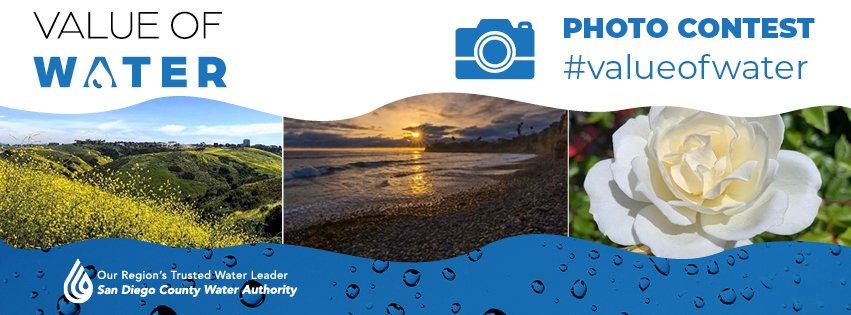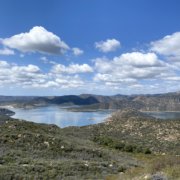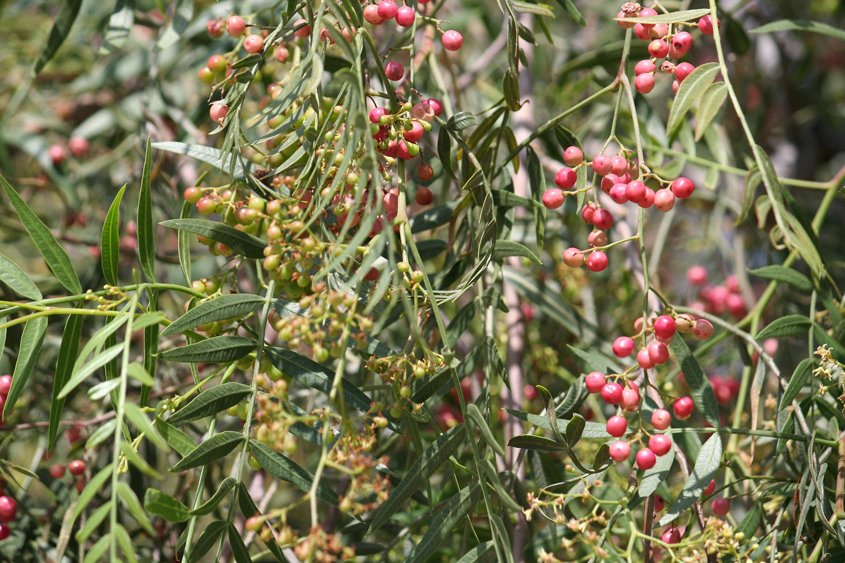During May, share what the value of water means to you on Instagram for the chance to win great prizes from our partners around San Diego County, including Balboa Park attractions, San Diego Botanic Garden, and the Water Conservation Garden.
The San Diego County Water Authority and its 24 member agencies are hosting their annual photo contest to celebrate Water Awareness Month in May.
Water is essential to everything we do. From our morning routines when we’re making that first cup of coffee to our evening routines when we’re brushing our teeth before bed.
But water is also there for all the fun in-between moments when we’re outdoors and enjoying the best nature has to offer. From surfing San Diego County’s beautiful beaches, to exploring waterfalls in the backcountry, to fishing and boating in the region’s lakes. Water brings so much enjoyment, and it also powers our key industries such as brewing, tourism, manufacturing and agriculture.
Water Awareness Month
As the region celebrates the value of water, it’s important to remember that San Diego County has a proud history of improving water-use efficiency. In fact, over the past 30 years, per capita water use has dropped by more than 50% and maintaining water-smart habits is especially important during what’s turning out to be a very dry year across California.
Since 1991, the Water Authority’s water-use efficiency programs and initiatives cumulatively have conserved more than 1 million acre-feet of water. These savings have been achieved through measures that include incentives on water-efficient devices, legislative efforts, and outreach programs, including photo contests.
Using water efficiently is a way of life and an important responsibility that comes along with the benefits of living in a beautiful Mediterranean climate like San Diegans enjoy.
Over the past decade, residents and businesses across the county have adopted “WaterSmart” plants, irrigation technologies and habits that not only save money, but also create vibrant yards, reduce energy use, protect natural resources and reduce landscape maintenance.
Value of Water photo contest May 1-31
Enter the Value of Water Photo Contest on Instagram from May 1-31, 2021, for the chance to win great prizes from local tourist attractions.

How to enter
- Take a photo that illustrates what the value of water means to you. The value of water is all around us, in almost everything we do. Have fun and be creative with the theme.
- Post the photo to Instagram between May 1-31, follow and tag the Water Authority @sdcwa, and use #ValueOfWater in your post. Multiple entries will be accepted.
Details
- Contest begins Saturday, May 1, 2021 and ends Monday, May 31, 2021 at 5 p.m.
- Winners will be announced on Instagram the week of May 31, 2021.
- Winners chosen based on most “likes” on Instagram.
Prizes
Prizes have been generously donated by local organizations including the Balboa Park Cultural Partnership, Friends of Balboa Park, San Diego Botanic Garden and Water Conservation Garden.
- 1st Prize: 4-pack of Balboa Park Explorer Park Passes + 4 Balboa Park Carousel tickets
- 2nd Prize: 4-pack of tickets to the San Diego Botanic Garden*
- 3rd Prize: 4-pack of tickets to the Water Conservation Garden
*The 2nd Prize winner will have their choice of tickets to the San Diego Botanic Garden (Encinitas) or the Water Conservation Garden (El Cajon).
Contest Rules
- Participants must be 18 or older. Winners will be asked to show proof of age.
- To qualify, participants must follow and tag the San Diego County Water Authority on Instagram @sdcwa, and the post must include the hashtag #ValueofWater.
- Photos will be accepted from May 1-31, 2021. The cutoff time is 5 p.m. on May 31, 2021. Multiple entries will be accepted.
- Winners will be announced on Instagram the week of May 31, 2021.
- Winners chosen based on most “likes” on Instagram.
- Employees and Board members of the San Diego County Water Authority and their immediate families are not eligible for prizes but may contribute images.







